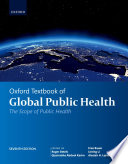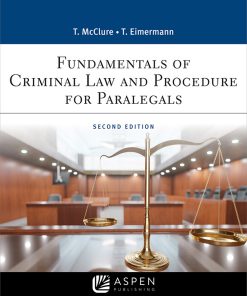Public History A Textbook of Practice 2nd Edition by Thomas Cauvin ISBN 9781000576443 0367473089
$50.00 Original price was: $50.00.$25.00Current price is: $25.00.
Public History A Textbook of Practice 2nd Edition by Thomas Cauvin – Ebook PDF Instant Download/Delivery: 9781000576443 ,0367473089
Full download Public History A Textbook of Practice 2nd Edition after payment

Product details:
ISBN 10: 0367473089
ISBN 13: 9781000576443
Author: Thomas Cauvin
Public History A Textbook of Practice 2nd Edition Table of contents:
Part I: Public history: past, present, and future of the field
1 Defining public history
Why (not) a definition of public history?
A very difficult and potentially counter-productive task…
… that might yet be necessary
Public his’tree
The public(s) in public history
Public history, applied history, and uses of the past
History for the publics? Activist history
From historians to public history practitioners: who is doing public history?
Public history versus academic history?
Notes
Bibliography
2 A long history of public history
Public historical practices before public history
The ivory tower: truth or fiction?
Historians outside academia
International redefinitions of history’s public role in the 1960s and 1970s
The institutionalization of public history in the United States
Note
Bibliography
3 Internationalization of public history
Public histories in the Anglosphere in the 1980s
Economic and public policy approaches in Britain
Public history and communication in Australia
Public history: a North American model?
A new process of internationalization in the 2000s
The International Federation for Public History
National public histories
The future of international public history
Notes
Bibliography
4 Collaboration, expertise, and authority: history with publics
Shared authority
Why share authority?
Public history in an ocean of memories
Criticisms
Memories and the multiplication of narratives over the past
No radical trust
What can historians bring to the table?
Because sharing is not losing
Different types of participation
Different types of expected expertise
Combined and open expertise
“With or without you”: whom to work with and decision-making
When collaboration is controlled or refused
Can historians work with everyone?
Decision-making
Notes
Bibliography
5 Digital public history
The rise of digital history
Digital history + the Web = digital public history?
New public opportunities
Digital public history
From communication to user-centered history
Digital public access and communication
The users at the center of the process
User-generated participatory history through crowdsourcing
From micro-tasks to participatory projects: citizen science and history
Learning through participation: the contested benefit of citizen science
Tasks in citizen history
Notes
Bibliography
Part II: Public history and sources
6 Museums and collections
Public history museums
The birth of public museums
Defining the role of museums
Creating museums: a public history enterprise
Decolonizing museums
Doing public history in museums
Material culture
Participatory collections
Managing public history collections
Appraisal and accessioning
Preserving and digitizing collections
Researching the collections
Deaccessioning objects
Note
Bibliography
7 Archiving
What is an archive?
Managing archives
Selection and value
Description and metadata
Arrangement
Power, silences, and representativity
Digital archives
Digitization and public engagement
Born-digital archives
Digital participation and crowdsourcing
Digital archiving in questions
Archiving … or not
Ownership and anonymity
Inclusion, representativity, and digital structure
Archiving as public history
Note
Bibliography
8 Historic preservation
Variety of approaches
Debates
International trends
Historic preservation in the United States
Main agencies
Laws and regulations
Some specific sites and activities
Public archaeology
UNESCO’s World Heritage Sites
Historic houses
Landscapes
Battlefields
Competing uses
Sites of violence and death
Reuse and revitalization
Environment and sustainability
Notes
Bibliography
9 Oral history
Oral history and public history: a love-story
Oral history as a public process
Participation and shared authority
Doing oral history
Starting a project
Interviews: a set of practices
Subjectivity from narrators
Preservation and uses
Notes
Bibliography
Part III: Making public history
10 Public history writing
Communicating public history through texts
Some types of public history writing
Between academic and popular writing styles
History magazines and newspapers
Children literature
Graphic novels and interdisciplinary work
Writing history in the digital age
Hypertext writing
Blogging
Social media
Notes
Bibliography
11 Historical fictions
Fictions and historical (in)accuracy
Research and fiction
Truth and plausibility
First-person narratives and anachronisms
Fictions and public debates
Notes
Bibliography
12 Radio and audio-visual production
Radio broadcasting
History on screen
Mise-en-scène
The publics in audio-visual production
New digital format: podcasting
A public history format
Training for podcast production
Video production
Democratization
Historical video production training
Notes
Bibliography
13 Exhibiting history
Types of exhibitions
Publics and exhibition
Building exhibitions
Conception and interpretive planning
Objects and materials
Interpretive design: object, space, and light
Writing texts
From visitor engagement to co-curation: user-generated contents in exhibitions
Visitor engagement
Visitors as co-curators
Exhibitions in the digital age
Note
Bibliography
14 Immersion and performance
Immersive environments
Between past and present
Emotions and experiences
Living history
Living history sites
Reenactments
Tours and interpretations
Guided tours
Costumed interpreters
History on stage
Dances and musicals
Gamification
Digital video games
Digital reality
Virtual and augmented reality
The Holocaust, digital reality, and historical witnesses
Notes
Bibliography
Part IV: Collaboration, uses, and applications of public history
15 Public history teaching
International overview
Why do we need public history teaching?
Courses and skills
Studying public representations of the past
Career oriented skills: grant-writing and copyrights
Theory, practice, and self-reflectivity
Internships
International perspectives on public history teaching
Notes
Bibliography
16 Working with under-represented groups and communities
Family histories
Women’s history
Lesbian, gay, bisexual, transgender, and queer history
Decolonized public history: Native narratives
Migrants and refugees’ history
Notes
Bibliography
17 Public history, conflicts, and competing narratives
Conflicting public narratives
Commemorations and celebration of the past
Reconciliation, transitional justice, and competing narratives
Post-conflicting public history
Remembering victims
Agonism and space for competing narratives
Public history under pressure
Political agendas
Authoritarian politics
Monuments
Notes
Bibliography
18 Business, policy, justice: consulting and service
Entrepreneurship and corporate historians
“The love of money is a root of all kinds of evil”: entrepreneurial public history and its criticisms
Relations between historians and their clients
Skills and practices
Historians in governments and public policy
Official histories
Public policy
Historians and the courtroom
Variety of issues
Historians as expert witnesses
Practices
Notes
Bibliography
Index
People also search for Public History A Textbook of Practice 2nd Edition:
u.s. history 2 textbook
textbook history
textbook apush
u.s. history textbook prentice hall pdf
u.s history textbook pdf
Tags: Thomas Cauvin, Public History, Practice
You may also like…
Medicine - Dermatology
Relationships & Lifestyle - Alternative Medicine & Natural Healing
Jurisprudence & Law - Criminal Law & Procedure
Fundamentals of Criminal Practice 2nd Edition Thomas E. Eimermann
Linguistics - Linguistics
Politics & Philosophy - Social Sciences
The Practice of Government Public Relations 2nd Edition Mordecai Lee
Medicine - Epidemiology
Oxford Textbook of Global Public Health 7th Edition Roger Detels
History - Asian History











